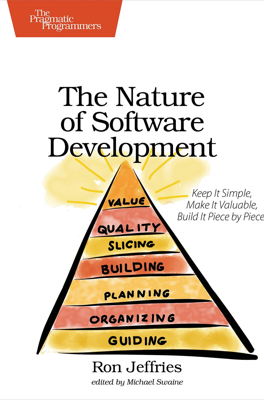Building the Product, Feature by Feature
Feature-by-Feature Development in Software Projects
Building Software with a Feature-by-Feature Approach: This approach prioritizes the delivery of value by developing software in small, complete cycles typically spanning one to two weeks. Each cycle encapsulates a full development process from planning to testing, ensuring that every feature is both functional and valuable upon completion. This iterative process not only enables continuous improvement and learning but also maintains software clarity and functionality.
Tackling the Practicalities: To successfully implement this method, both developers and business stakeholders must adapt and refine their skills. Businesses need to excel in distilling broad requirements into actionable and valuable feature steps. This shift ensures that each development cycle produces software components that stakeholders truly need, enhancing the project's ROI.
Overcoming Difficult Median Challenges: Foreseeable challenges include maintaining a balance between over-designing and under-designing, which can either slow down the process or complicate feature integration. Frequent and incremental deliveries help to adjust the focus based on real user feedback and project demands.
Ensuring Real vs. Apparent Progress: Visibility into the actual progress of the project is vital. By defining features clearly and verifying their completion rigorously, the project avoids the pitfalls of ambiguous progress reports. Each feature must meet the criteria of being “done” to ensure it delivers the expected value.
Avoiding the Test-and-Fix Pitfalls: A common issue in software development is the extended test-and-fix phase which can severely delay the project's completion. By adopting the feature-by-feature method, where each feature is developed to be potentially shippable by the end of each cycle, the need for a lengthy final testing phase is minimized.
Adapting Design Incrementally: As features are built, it is essential to refine and adapt the software design continually. This dynamic adjustment helps in averting design rigidity that can hinder future modifications or additions. Monitoring the pace at which features are delivered—velocity—provides insights into whether the design efforts are appropriately scaled.
Supporting Continuous Design Improvement: The development team requires adequate support and resources to ensure the ongoing cleanliness and functionality of the software design. Promoting and maintaining design health is as crucial as feature development, necessitating a balance that supports sustainable and efficient feature integration.
Further Resources: For more detailed guidance on building skills and refining software design, see: * Chapter 18: To Speed Up, Build with Skill * Chapter 19: Refactoring
This structured approach ensures not only the adaptability and relevancy of the software product to user needs but also positions the project for efficient and timely deliveries, thereby maximizing the return on investment.
